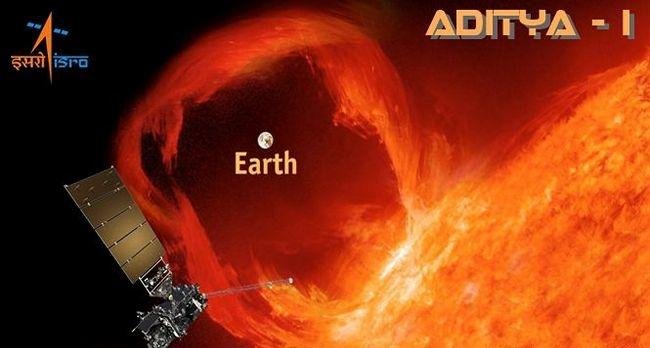ISRO's Aditya-L1 vs Parkar Solar Probe: A Comparison
It will be a 400-kg class satellite with the Visible Emission Line Coronograph as a payload.

- Country:
- India
The launch of the ambitious Parkar Solar Probe by the National Aeronautics and Space Administration (NASA), last weekend, to the center of our solar system created waves across the world and the space community and further proved its unanimous command on space exploration.
While in India, scientists at the Indian Space Research Organisation (ISRO) are getting ready to launch a satellite on the similar lines as the Solar Probe which will be catapulting the space scene of India into the global light. The satellite named as Aditya-L1 is scheduled to be launched sometime in the next two years into a halo orbit around the L1 Lagrangian point in the earth-sun orbit.
Where the Solar Probe by NASA aims to penetrate the sun’s atmosphere and collect data determining the energy flow of the outer corona in addition to the study of the magnetic fields generated by the solar winds, ISRO’s Aditya-L1 will study the sun’s corona from a distance and carry out various experiments related to the study of the sun’s Photosphere and Chromosphere, particle flux and variations in the magnetic field strength at the halo orbit.
Next up is the Sun orbiting observatory called Aditya-L1. Scheduled to be launched by 2021, this spacecraft will study the Sun using a wide range of scientific instruments; from optical/UV imaging and particle detectors to magnetometers and plasma analysers. #Science! 🤓 pic.twitter.com/o28Ffymqr8
— TeamIndus (@TeamIndus) August 15, 2018
It will be a 400-kg class satellite with the Visible Emission Line Coronograph as a payload.
It will be flung into a halo orbit located some 1.5 million kilometers from earth and hence will unobstructed and unaffected by an eclipse.
ISRO is also planning to add an additional six payloads but the primary one will remain to be the Coronograph. The payloads need to be out of earth’s magnetic field in order to be accurate hence the halo orbit concept comes in for rescue.
ISRO believes that the satellite will benefit multiple solar scientists across the globe and within the country to participate in space-based instrumentation and observations. The project is also forecasted to help in a comprehensive understanding of the dynamical solar processes and address some of the outstanding problems in solar physics.
Former ISRO chairman, G Madhavan Nair said that there is still a lot of mystery about our mother star and Aditya-L1 will be a powerful tool to find answers for many answers to many of the unsolved mysteries of the sun.
ISRO remarked that though the Aditya-L1 is certainly not comparable to the Parker Solar Probe, it will be very useful for Indian scientists and those around the world once appropriately developed.
ALSO READ
BJP's Hema Malini meets farmers during poll campaign in Mathura, lends a hand to women working in fields
Odisha: BJD fields 33 pc women candidates, 38 pc turncoats in LS polls
LS polls: SAD announces first list of 7 candidates for Punjab, fields Chandumajra from Anandpur Sahib
Cong fields sitting Punjab MP Manish Tewari from Chandigarh Lok Sabha seat
Congress releases another list of candidates; fields Vikramaditya against Kangana Ranaut










